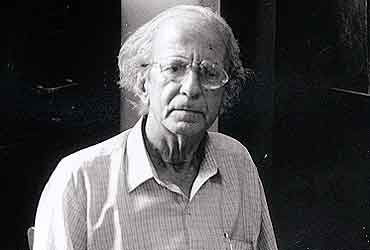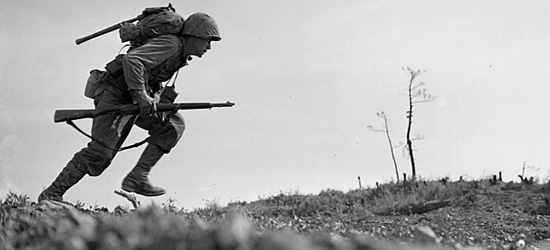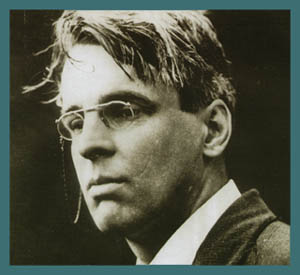This poem analysis of ‘West London’ by Matthew Arnold is divided into three parts – rhyme scheme, use of inverted sentences, and contrasts.
West London by Matthew Arnold Analysis
Rhyme Scheme in West London: This poem explanation would be incomplete without a discussion of the rhyme scheme of ‘West London’, for this rhyme scheme contributes significantly to Arnold’s display of poetic craft in the poem. ‘West London’ is a sonnet (as mentioned before in the poem summary). A sonnet consists of fourteen lines divided into an eight-line unit known as an octet, and a six-line unit known as a sestet.
The octet and sestet can together form a single stanza (which is the case in ‘West London’), or appear as two separate stanzas. Sonnets typically occur in two types of rhyme schemes – in the pattern ABBA ABBA CDE CDE , known as the Petrarchan sonnet, or in the pattern ABAB CDCD EFEF GG, known as the Shakespearian sonnet. In ‘West London’ neither of these patterns is followed in its entirety. The rhyme scheme of ‘West London’ is as follows: ABBA ABBA CDE DEC. Thus it is an atypical sonnet.
Use of Inverted Sentences: This part of the poem explanation focuses on a unique feature of ‘West London’ – the fact that Arnold often reverses the usual order of words in the lines of this poem. For example, in the second line, instead of saying “I saw a tramp”, he writes “A tramp I saw”. Similarly, in the eighth line, instead of saying “She had let the rich pass with frozen stare”, he writes “The rich she had let pass with a frozen stare.” This inversion is not done without reason by Arnold. By changing the order of the words in these sentences, Arnold shifts the subjects of these sentences.
In the eighth line, the rich are made the subject of the girl’s stare. It is the rich to whose presence she is reacting. It is the rich whom she rejects as potential helpers. However, she exerts no agency in her refusal to beg for them. Rather it is they who ignore the poor and live in their ivory towers amidst their luxuries with no thought spared for anyone who does not belong to their own class. Thus it is the happy ignorance of the rich that prompts the cold stare from the beggar girl.
It is this primacy of the rich that Arnold wants to emphasize in the eighth line. By contrast, in the second line, he refuses subjecthood for himself (for the “I” in the poem), and instead makes the mother of the beggar family the subject of this line, and indeed of the entirety of ‘West London’. Turning away from the individualism of the Romantic poets like Wordsworth and Coleridge who had written in the age preceding his, and who had privileged their personal experiences above all else, Arnold focuses instead on British society at large, in the hope that addressing all the ills of this society in poetry will lead to real-world improvement of its deplorable condition.
Contrasts: This part of the poem analysis focuses on the fact that Arnold describes multiple sets of opposites in ‘West London’ to emphasize the gap between the rich and the poor that he thought plagued British society in the Victorian era. The very first contrast comes with the difference between what the title of the poem refers to, and its content. West London is a posh area, the habitation of the financially superior classes. The fact that Arnold focuses not on high society or on their lavish lifestyle, but rather on a beggar family is remarkable. This is meant to show that even in such a wealthy neighbourhood like Belgrave Square, poverty exists and it will continue to exist until the rich take heed of the sufferings of the poor.
The next contrast is between “aliens” and “friends”. Like beings from another planet, the rich appear not to know of the existence of poverty itself. That is why they will never be able to empathize with the family that Arnold describes in ‘West London’, and the daughter, though she is not very old, has been forced to learn this harsh truth of life. However, the poor do get succour from people like themselves – from other persons who must work hard to make ends meet. In sharing the same fate in life, they stand by and support each other in all situations. Of this too the young girl is aware.
The last contrast is between the “unknown little” and the “unknowing great”. The fact that the poor are considered in such a small magnitude, while the rich are considered in much greater proportion belies the fact that their numbers are in fact just the reverse. It is the poor who populate London in much greater numbers than the rich. Only a few are as wealthy and privileged to be able to afford living in Belgrave Square.
However, the few rich do a good job of ignoring the huge mass of the poor. On the other hand, the poor must encounter the rich everyday and become doubly aware of the bad cards they have been dealt in life. Arnold sees this situation as being evidence of injustice, and therefore wants to bring the situation to the forefront of the Victorian public psyche so that fruitful changes can be brought about in contemporary British society. Read more: West London by Matthew Arnold Summary
Keywords: West London by matthew arnold analysis, analysis of West London by matthew arnold, West London by matthew arnold critical appreciation, West London by matthew arnold explanation, West London by matthew arnold detailed analysis
Some online learning platforms provide certifications, while others are designed to simply grow your skills in your personal and professional life. Including Masterclass and Coursera, here are our recommendations for the best online learning platforms you can sign up for today.
The 7 Best Online Learning Platforms of 2022
- Best Overall: Coursera
- Best for Niche Topics: Udemy
- Best for Creative Fields: Skillshare
- Best for Celebrity Lessons: MasterClass
- Best for STEM: EdX
- Best for Career Building: Udacity
- Best for Data Learning: Pluralsight















